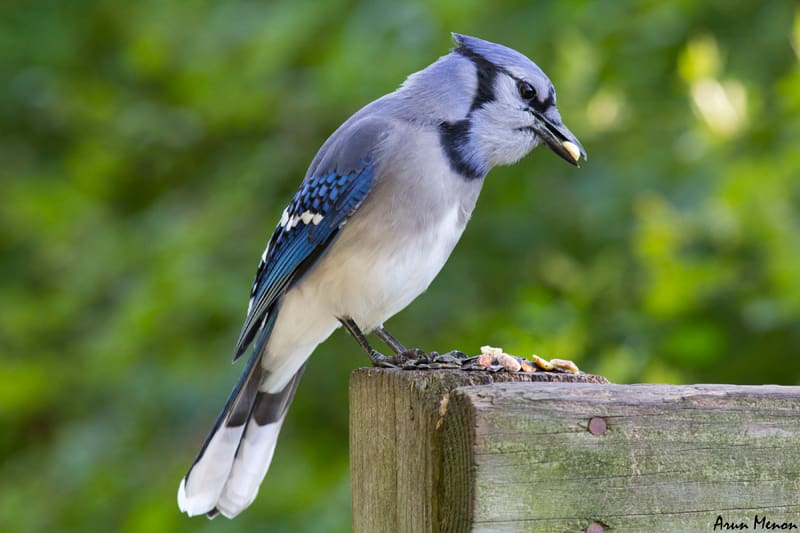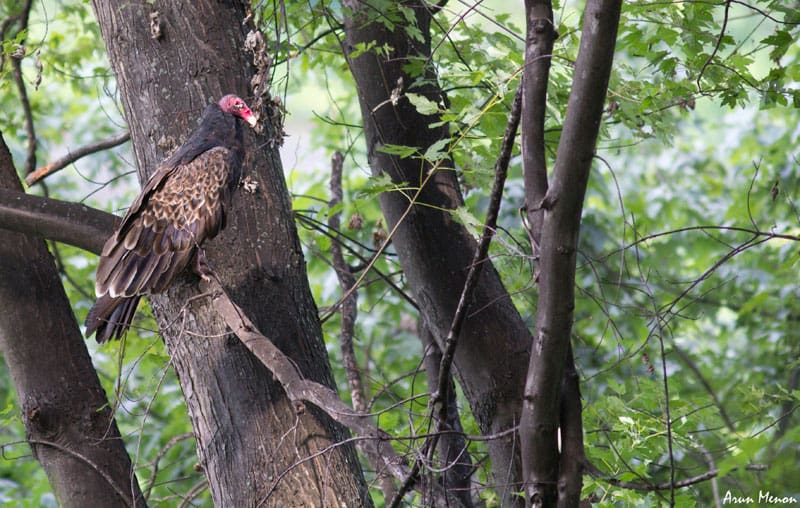On the rarest of rare occasions, your boring desk job can get really interesting. If it takes you on short trips to lands unseen. July 2012 was one such, for it took me the United States and kept me there for four months. I was mostly busy with work but the weekends were left to me.
So what does a bored birder do on weekends? That one’s a sitter.
One of my first stops was Central Park in New York City. There I met the bird that shares its first name with the country that is its home.

Though American Robins are called robins (which belong to the family of flycatchers) they are actually thrushes, answering to the zoological name of Turdus migratorius. Early English settlers, perhaps nostalgic for home, were inspired by the sight of the bird’s reddish breast to name it after Robin Redbreast back home. It is migratory within the United States and Canada, and returns to its northern breeding grounds in summer. The bird thrives in American popular culture. It has been noted, as in the famous Mary Poppins song, for “feathering its nest”. Joan Baez, in Diamonds and Rust, sings of eyes that were “bluer than robin’s eggs” — which is true of the American Robin (the European Robin’s eggs are a dull, blotched beige).
Although Central Park did not prove to be very satisfactory for birding (maybe because there were two non-birders with me and I was hurrying along so as not to bore them), Stiglmeier Park (also known as Losson Park) in a small town called Cheektowaga in the state of New York did not disappoint me one bit.

Here I was in the company of photographers and nature-lovers. They took me to the park with the promise of many of the common bird species and, if lucky, the hummingbird. As promised, I did get to see many of the common species including the Gray Catbird (Dumetella carolinensis), which kept calling from the bushes for a long time making me think there was a cat hidden there. Explains the name!


One thing I noticed when at the park was people consciously bringing food for the birds to be kept at various spots in the park. This showed their care and concern for the birds but I could not help but be skeptical about the benefit of this to the bird life and ecology of the area. We met an old lady who said she had been feeding the bird at the park, almost every day, for decades, even during peak winter. She used different seeds/nuts for different species and even said she first placed the feed for the bigger species so that the smaller ones wouldn’t be harassed when given their share.










On my way to Washington DC, we visited a colleague’s friend who was staying in Virginia. Right in the middle of the community was a huge, well-maintained lake. This place was a nice little surprise. Lucky for me, I was carrying my camera!







I also went to the nearest protected area, The Delaware Water Gap. Created by the Delaware River cutting through a ridge in the Appalachian Mountains. The place is used primarily for recreational purposes such as rafting, canoeing, swimming, fishing, hiking, etc. This was where I spotted an American Black Bear crossing the road while returning from my failed attempt at locating a Beaver. I had walked alone in the woods looking for a pond that was supposed to be the haunt of a beaver. The bear was spotted only about half a kilometer away while we were returning by car!











The one thing that I noticed in most of these parks and nature preserves were that the birds were not overly shy or wary of humans. In India most of the larger species are wary of humans and take off when we get too close for their comfort. In the US, I was able to get much closer to my feathered friends than I was able to back home. It was as though they knew that humans did not pose a grave threat. This trust probably reflects the attitude of the people there – compassion for their wild neighbors. And perhaps that’s exactly what we need in today’s world!

- Savannah Sprinter – A day at the office with the cheetah - April 9, 2020
- Mangalajodi – birds and serenity in a winter wetland - April 14, 2018
- Let the sleeping tiger lie – on meeting the big cat on foot - March 13, 2017


Interesting! I can recognize most of these birds.. The first one you have posted – American Robin was so adamant in building a nest every year in my front door light. They did have really blue eggs.
That’s nice. Now you can start relating to the birds you see around.
And I wish I had a bird build a nest in my house! Lucky you!